
RMS Olympic was a British ocean liner and the lead ship of the White Star Line's trio of Olympic-class liners. Olympic had a career spanning 24 years from 1911 to 1935, in contrast to her short-lived sister ships, Titanic and Britannic. This included service as a troopship during the First World War, which gained her the nickname "Old Reliable", and during which she rammed and sank the U-boat U-103. She returned to civilian service after the war, and served successfully as an ocean liner throughout the 1920s and into the first half of the 1930s, although increased competition, and the slump in trade during the Great Depression after 1930, made her operation increasingly unprofitable. Olympic was withdrawn from service and sold for scrapping on 12 April 1935 which was completed in 1937.

HMHSBritannic was the third and final vessel of the White Star Line's Olympic class of steamships and the second White Star ship to bear the name Britannic. She was the youngest sister of the RMS Olympic and the RMS Titanic and was intended to enter service as a transatlantic passenger liner. She was operated as a hospital ship from 1915 until her sinking near the Greek island of Kea, in the Aegean Sea, in November 1916. At the time she was the largest hospital ship in the world.

An ocean liner is a type of passenger ship primarily used for transportation across seas or oceans. Ocean liners may also carry cargo or mail, and may sometimes be used for other purposes. Only one ocean liner remains in service today.
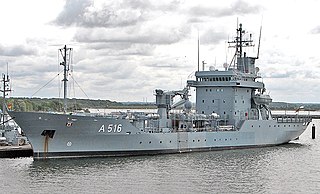
A ship's tender, usually referred to as a tender, is a boat or ship used to service or support other boats or ships. This is generally done by transporting people or supplies to and from shore or another ship.
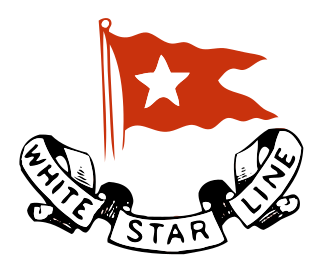
The White Star Line was a British shipping line. Founded out of the remains of a defunct packet company, it gradually rose up to become one of the most prominent shipping companies in the world, providing passenger and cargo services between the British Empire and the United States. While many other shipping lines focused primarily on speed, White Star branded their services by focusing more on providing comfortable passages for both upper class travellers and immigrants.

RMS Oceanic was a transatlantic ocean liner built for the White Star Line. She sailed on her maiden voyage on 6 September 1899 and was the largest ship in the world until 1901. At the outbreak of World War I she was converted to an armed merchant cruiser. On 8 August 1914 she was commissioned into Royal Navy service.

The International Mercantile Marine Company, originally the International Navigation Company, was a trust formed in the early twentieth century as an attempt by J.P. Morgan to monopolize the shipping trade.

SS Nomadic is a former tender of the White Star Line, launched on 25 April 1911 at Belfast, that is now on display in Belfast's Titanic Quarter. She was built to transfer passengers and mail to and from the ocean liners RMS Olympic and RMS Titanic. She is the only surviving vessel designed by Thomas Andrews, who also helped design those two ocean liners, and the last White Star Line vessel in existence today.

RMS Celtic was an ocean liner owned by the White Star Line. The first ship larger than SS Great Eastern by gross register tonnage, Celtic was the first of a quartet of ships over 20,000 tons, the dubbed The Big Four. She was the last ship ordered by Thomas Henry Ismay before his death in 1899. The second liner of her name she was put into service in 1901. Her large size and her low but economical speed inaugurated a new company policy aiming to favour size, luxury and comfort, to the detriment of speed.

RMS Cedric was an ocean liner owned by the White Star Line. She was the second of a quartet of ships over 20,000 tons, dubbed the Big Four, and was the largest vessel in the world at the time of her entering service. Her career, peppered with collisions and minor incidents, took place mainly on the route from Liverpool to New York.

RMS Adriatic was a British ocean liner of the White Star Line. She was the fourth of a quartet of ships of more than 20,000 GRT, dubbed The Big Four. The ship was the only one of the four which was never the world's largest ship. However, she was the largest, the fastest, and the most luxurious of the Big Four, being the first ocean liner to have an indoor swimming pool and Victorian-style Turkish baths.
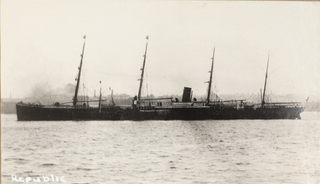
SS Republic was an ocean liner built in 1871 by Harland and Wolff for White Star Line. It was intended to be the last of four vessels forming the Oceanic-class, before two new ships were commissioned. After a rough maiden voyage from Liverpool to New York City on 1 February 1872, the ship was chosen to be on White Star Line's first voyage on the South Atlantic and Pacific line with four other ships, destined for Chile. In 1874, the construction of modern ships SS Germanic and SS Britannic led to SS Republic's becoming the standby vessel of White Star Line. It occupied this position for 15 years, and attempts were made to modernise it in 1888. When RMS Teutonic and RMS Majestic entered service in the following year, the Republic became surplus to White Star's needs.

SS Minnewaska was a 21,716-ton ocean liner in the service of the Atlantic Transport Line and the Red Star Line from 1923–1933

The Olympic-class ocean liners were a trio of British ocean liners built by the Harland & Wolff shipyard for the White Star Line during the early 20th century. They were Olympic (1911), Titanic (1912) and Britannic (1914). All three were designed to be the largest and most luxurious passenger ships at that time, designed to give White Star an advantage in the transatlantic passenger trade.
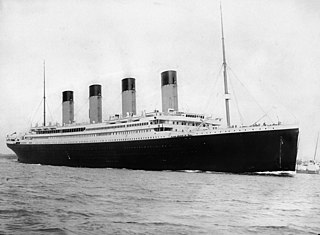
RMS Titanic was a British ocean liner that sank on 15 April 1912 after striking an iceberg on the ship's maiden voyage from Southampton, England to New York City, United States. Titanic, operated by the White Star Line, was carrying passengers and mail. Of the estimated 2,224 passengers and crew aboard, approximately 1,500 died, making the incident the deadliest sinking of a single ship at the time. Titanic carried some of the wealthiest people in the world, as well as hundreds of emigrants from the British Isles, Scandinavia, and elsewhere in Europe who were seeking a new life in the United States and Canada. The disaster drew public attention, spurred major changes in maritime safety regulations, and inspired a lasting legacy in popular culture.

The "Big Four" were a quartet of early-20th-century 20,000-ton ocean liners built by the Harland & Wolff shipyard for the White Star Line, to be the largest and most luxurious ships afloat. The group consisted of Celtic, Cedric, Baltic and Adriatic.
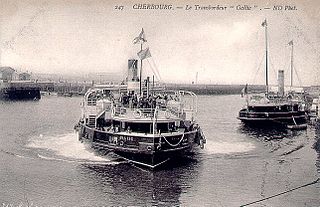
SS Gallic was a paddle steamer that built in Scotland 1894 as Birkenhead, renamed Gallic in 1907 and scrapped in Liverpool in 1914. She was designed and built as a Mersey Ferry for Birkenhead Corporation. White Star Line bought her in 1907 to use as a passenger tender, and renamed her Gallic.
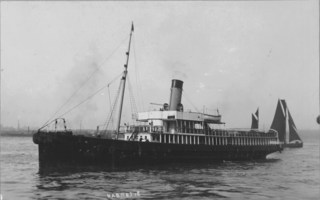
SS Magnetic was a passenger tender of the White Star Line built in 1891. She was laid down at the Harland and Wolff Shipyards in Belfast, Ireland. Magnetic was sold to a different company in 1932 and renamed Ryde, and scrapped in 1935.

Titanic: Blood and Steel is a 12-part television costume drama series about the construction of the RMS Titanic. Produced by History Asia, it is one of two large budget television dramas aired in April 2012, the centenary of the disaster; the other is Titanic.

The Oceanic class were a group of six ocean liners built by Harland and Wolff at Belfast, for the White Star Line, for the transatlantic service. They were the company's first generation of steamships to serve the North Atlantic passenger trade, entering service between 1871 and 1872.





















